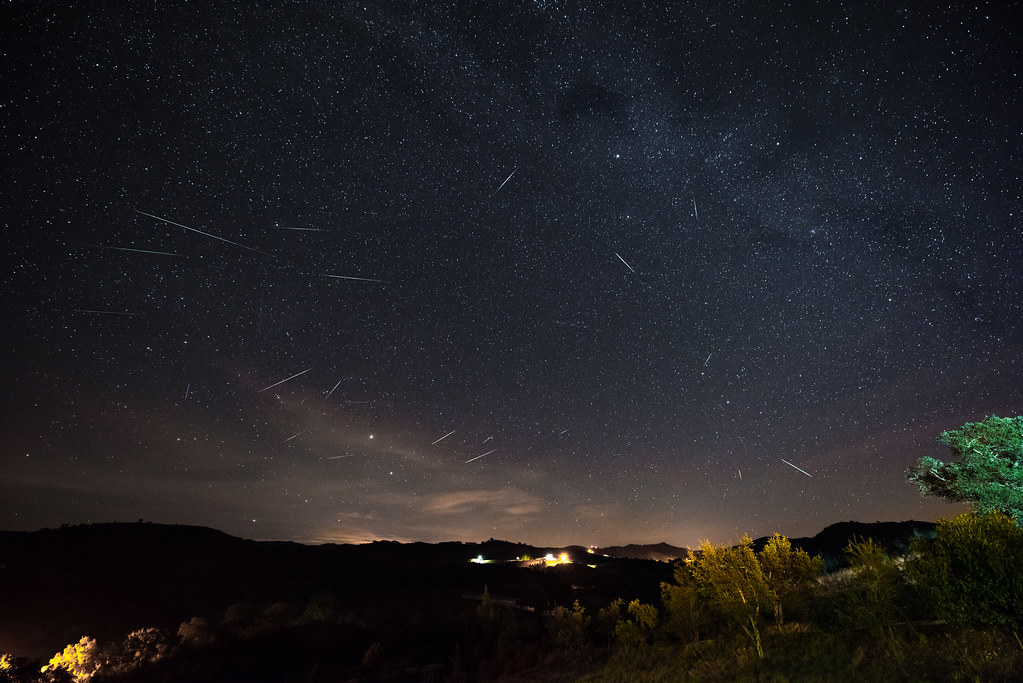Every year in December we are treated to the Geminid Meteor Shower which is debris left over by the Asteroid 3200 Phaethon. The peak here in the GMT Timezone (Portugal, UK & Ireland) is over the next 2 nights (December 13th and 14th) although will be visible for a few nights later. The best viewing starts after midnight and will last until dawn, but can be seen as soon as it goes dark. For a more detailed look at the times in your own timezone, take a look at Time and Date’s Web Page. Of course, any cloudy skies may hamper the viewing.
The Geminids take their name from the constellation Gemini where they originate, however, can be seen anywhere in the sky. Obviously the darker the sky the more chance of spotting them. They are very slow-moving and can shine multiple colours. It has been known to witness up to 160 an hour! After sunset if watch between North and East you can’t go wrong.
Here are some photos I took in 2017 with some photography tips following below
{Click image(s) to view on Flickr - opens in new tab}Photography Tips for the Geminids
- Get somewhere as dark as possible away from street lights.
- You will need a Tripod (or another method of fixing your camera such as a beanbag)
- Don’t be too afraid to shoot on a high ISO, if you are worried about too much noise, then try a lower setting and experiment until you are happy
- Your lens needs to be as wide as possible (lowest mm setting) to capture as large an area of the sky as possible
- You will need to turn your camera to Manual mode as the camera won’t have a clue what you are trying to achieve in almost total darkness
- Aperture (f-number) should be as wide as your lens goes, lowest f-number to get as much light into the camera as possible.
- You need to have a long shutter speed to capture as many shooting stars in a single exposure. However, be careful because too long and the stars in the sky will start to move and blur in your image. The rule here is whatever the mm setting of your lens divide 600 by it. In other words, if you have a 24mm lens, then 600/24 = 25 seconds, however, I usually go slightly less than this calculation.
- Depending on how good your cameras autofocus is, you may have to opt for manual focus and focus on something a long distance (called infinity) away such as a very distance house light or even a star.
- White Balance is your own personal preference, test with it set to daylight and if you don’t like it change it. Of course, if you are shooting RAW, then you can change this later!
- If you have a remote shutter release then this is a good idea, otherwise, use your camera’s self-timer to take away any movement of you pressing the shutter button.
The first photo above is a combination of 23 shots, 1 of the scene and then 22 different shots containing all the shooting stars.
If you want to create the star trails like the 2nd photo photo then you can do so with either taking a very long exposure using your “bulb” function or take multiple shots and combine them, which is what I did. The centre of the circle, in this case the top right of the image is always the North Star.
If you have an intervalometer setting on your camera, you can set it up and leave it do it’s thing.

